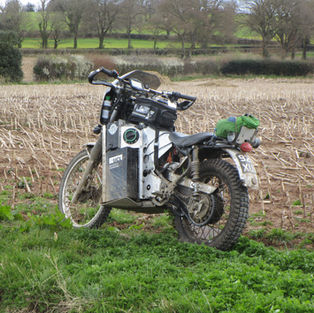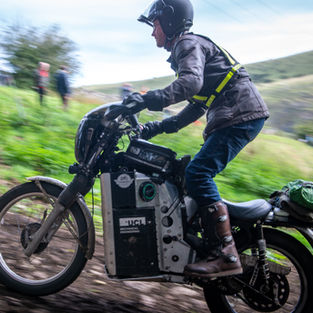
Electric drive offers an exciting new frontier in motorcycle engineering. Whether it's drag racing, urban deliveries or pushing the boundaries of long-distance touring, Spaven-Engineering is at the cutting edge of the electrical revolution.
We are all lucky to be witnessing a new age of pioneering motorcycles with records being set and barriers broken almost weekly as advances in batteries, electronics and motors extend the abilities of electric machines. Working alongside University College London, Spaven Engineering has made great advances in long-distance electric motorcycling, building a body of research and development that culminated in the first electric vehicle to complete the historic Land's End Trial: a 330 mile endurance event established in 1908 to test the original petrol-powered pioneers and still tough enough to see one-in-six competitors break down on the way to the finish line.
There is now a vast array of commercial electric motorcycles available, from California-cool Zeros to humble go-to-work mopeds, but if you want something a bit different you have come to the right place.
As a major part of my PhD project, the Royal Enfield "Charging Bullet" was designed and built to take on the MCC's historic endurance event: the 330 mile long Land's End Trial. The photos below give a flavour of a build process, from assessing a donor frame all the way to commissioning, testing and ultimately enjoying the fruits of all that hard work!
For the last few years, Spaven Engineering has been working closely with MotoCargo EV Ltd. to develop an electric cargo motorcycle, targeting urban and suburban deliveries where a light and nimble motorcycle can outcompete cumbersome four-wheeled vehicles. Starting out as a sculpture in steel to ensure the vehicle proportions and geometry were correct on such an unusual vehicle, the frame was initially built up into a rolling chassis to raise publicity around the idea and spark critical feedback from user groups.
With interest in the project rising, the vehicle was refitted for road use and registered through the DVLA's MSVA scheme. Under DfT funding, we continued to work with MotoCargo on a series of technical and road tests to explore the limits and opportunities of this vehicle type and build up a comprehensive specification to take the project forward into the next-generation production model.
It's not all serious sciency stuff in the world of electric motorbikes, we also have time for more whimsical projects. This 1973 Solo Electra is a diminutive German moped from the oil-crisis years. Although it was electric from new, the fifty-year old combination of lead-acid batteries and a converted car dynamo as a motor produced a distinctly underwhelming performance: 15mph for 15 miles (on a good day!)
I had always wanted a classic electric bike (as opposed to an electric conversion) so when this came up for sale a mere 15 miles from home, I couldn't resist! However, it had to be useable for VMCC social runs so the electrical system has been thoroughly modernised while retaining a completely original external appearance. With it's new 60 mile range, 90 minute recharge time and 30mph cruising speed (it is a moped after all..) it even took on the local big event, a 150 mile navigation challenge around the county border - Herefordshire on the Edge.





























